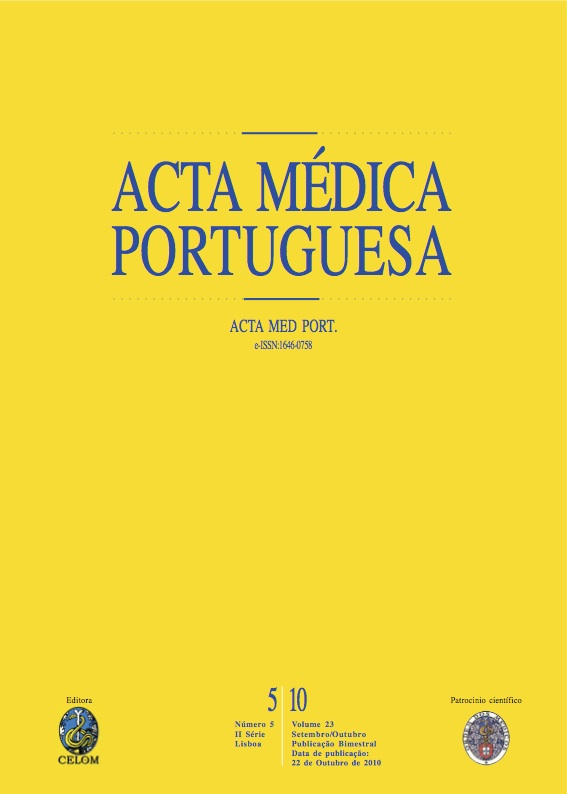Undifferentiated osteoclastic-type giant cell carcinoma.
DOI:
https://doi.org/10.20344/amp.705Abstract
Initially described 40 years ago (Rosai), the undifferentiated osteoclastic-type giant cell carcinoma (IOGCC) is a variant of ductal adenocarcinoma and accounts for less than 1% of exocrine pancreatic tumors. Its extreme rarity, with consequent existence of few reports and clinical experience, leads to the arousal of doubts with regard to its histogenesis, types of approach and therapeutical attitudes. It is important to note that in Portugal no similar case is registered in medical literature. A 61 year old patient admitted to the Internal Medicine Ward 3 at Coimbra University Hospital presents with a voluminous intra-abdominal mass in the left hypochondrium and microcytic anemia. During the investigation, a pancreatic neoplasm was identified, and the patient was submitted to surgical resection, the anatomo-pathological study of the tumor having revealed IOGCC. The particularities of the case, current available therapeutical options and its evolution are discussed, as well as a revision of the existing literature.Downloads
Downloads
How to Cite
Issue
Section
License
All the articles published in the AMP are open access and comply with the requirements of funding agencies or academic institutions. The AMP is governed by the terms of the Creative Commons ‘Attribution – Non-Commercial Use - (CC-BY-NC)’ license, regarding the use by third parties.
It is the author’s responsibility to obtain approval for the reproduction of figures, tables, etc. from other publications.
Upon acceptance of an article for publication, the authors will be asked to complete the ICMJE “Copyright Liability and Copyright Sharing Statement “(http://www.actamedicaportuguesa.com/info/AMP-NormasPublicacao.pdf) and the “Declaration of Potential Conflicts of Interest” (http:// www.icmje.org/conflicts-of-interest). An e-mail will be sent to the corresponding author to acknowledge receipt of the manuscript.
After publication, the authors are authorised to make their articles available in repositories of their institutions of origin, as long as they always mention where they were published and according to the Creative Commons license.









